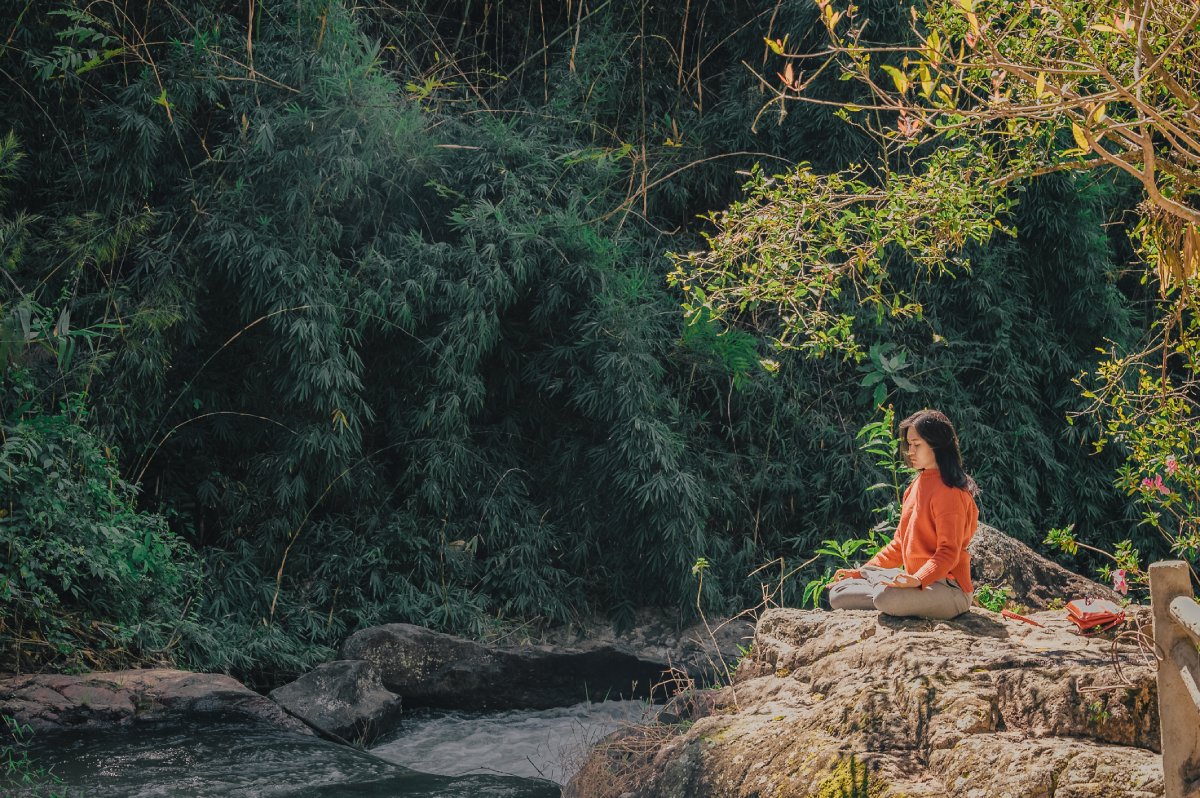When it comes to yoga meditation, the goal is to find a comfortable position where you’re both calm and alert. Without a stable physical position, finding mental balance becomes more challenging.
A yoga meditation pose draws from the wisdom of the yoga asanas, and can be done before, during or after a yoga session. A yoga meditation posture is simply the vessel for stillness to arrive and for self-awareness to be heightened.
The Buddha taught four meditation positions without ranking any of them above the others. Meditation is practiced not only by sitting, but also by standing, walking, or lying down.
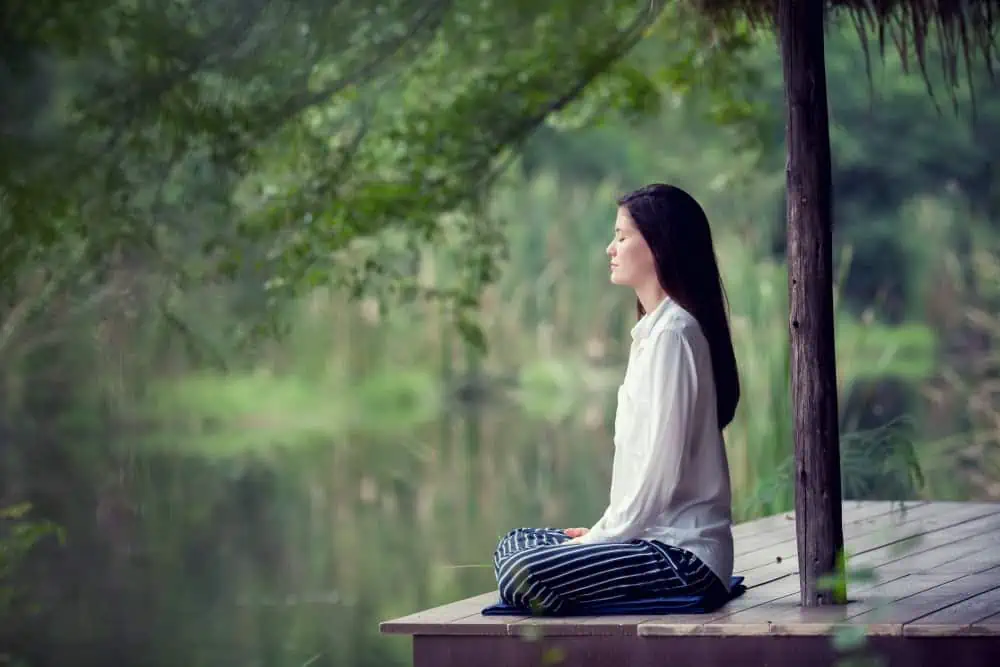
Today we’ll delve into the four meditative positions and distinguish between stillness and moving meditation. Although these poses entail minimal physical exertion, they are physical in nature. It’s crucial to note that if a bodily sensation arises and triggers disruptive thoughts, it presents yet another chance to cultivate self-love and empathy.
A meditation journey is not one that grows in a linear way. It is a journey that will spiral and take random twists and turns as you repeatedly bring your focus back to yourself.
Contents
- 1 What is Yoga Meditation?
- 2 How can I add mindfulness meditation to my yoga practice?
- 3 What are the benefits of yoga meditation?
- 4 Preparing for a meditation practice:
- 5 Basic Meditation Pose Guidelines
- 6 Standing Meditation Posture
- 7 Sitting Meditation Poses
- 8 More Seated Meditation Poses
- 9 Reclining Meditation Pose
- 10 Walking Yoga Meditation Posture
- 11 How can I keep track of my meditation practice?
- 12 FAQs About Meditative Positions
- 13 Summary
What is Yoga Meditation?
Ultimately, meditation is a practice that permeates many aspects and moments of our lives. But, when you’re starting out, it may feel overwhelming to choose from the multitude of techniques—and meditation postures—out there. Different meditation poses will suit us better in different periods of our lives.
Most basic meditations involve bringing our attention to the present moment by noticing physical sensations or the breath. This form of mindfulness helps with the development of concentration.
Yoga meditation can be practiced in a stationary posture, or it can take the form of moving meditation, which involves synchronized breath and fluid movement. Moving meditation can take the shape of a dynamic asana sequence, emphasizing the connection between the mind, body, and the current moment. It can also involve walking meditation.
Yoga meditation may also include some elements of a pranayama practice. These are breathing techniques that work by controlling the flow of breath in and out of your body for different lengths of time and in different ways. Strong pranayama practices can have many health effects. Consistent pranayama practice may lower blood pressure, help with reducing stress, and contribute to overall well-being.
However, you decide you want your yoga meditation practice to look and feel is up to you. The most important part is to actually start meditating!
How can I add mindfulness meditation to my yoga practice?
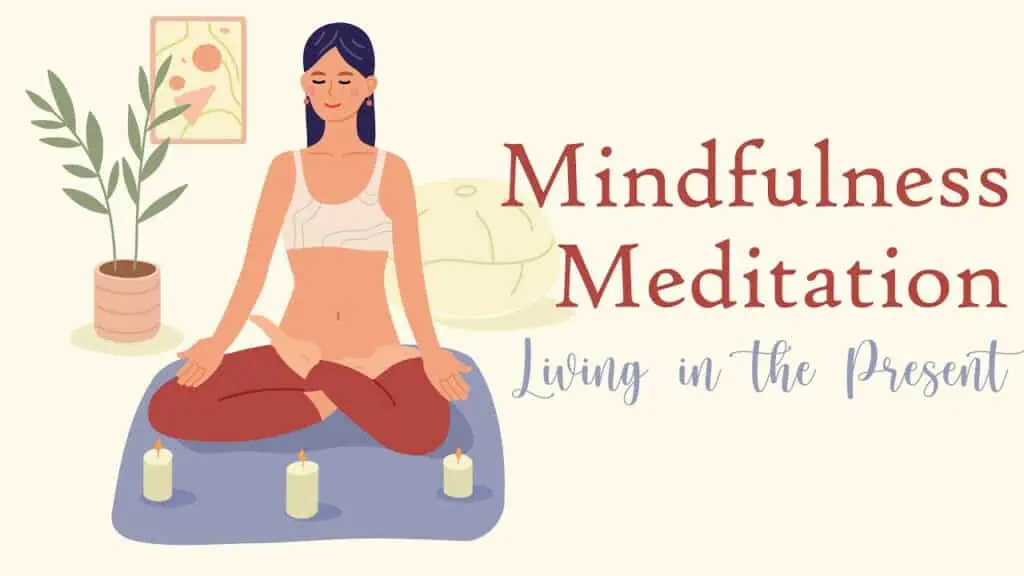
You can meditate anytime, anywhere, and for any length of time. Whether you’re brand new to meditation or a regular practitioner, the key is to stay flexible in your approach. Developing a meditation practice that works for you is the goal. Be willing to modify and adjust your practice to suit your needs and interests.
To establish a consistent meditation practice, a practical approach is to incorporate it into your regular yoga routine. This technique is referred to as habit stacking, where you append one habit (meditation) to an existing habit (yoga practice).
Whether you prefer hatha yoga, vinyasa yoga or a restorative yoga class, you can always practice coming back to a mindfulness meditation whenever your mind wanders. This will not only enhance your focus for your physical practice (asana practice), but it will also help to deepen your self-awareness.
Mindfulness meditation is about coming back to the present moment, breathing deeply, and being aware of what mental activity is happening in your mind, without becoming attached to the chit-chat that is happening simultaneously.
This allows you to be in the same place as your busy mind, while cultivating the peace and stillness of the calm mind.
What are the benefits of yoga meditation?
Yoga meditation is a whole-body experience. The ability to rest in a meditative state activates your parasympathetic nervous system and all the benefits cascade from being in this state of rest and relaxation.
In the parasympathetic nervous system, your breath naturally deepens, providing better circulation of oxygen and blood around the body. You will notice a drop in the stress hormones (adrenaline and cortisol), resulting in a slower heart rate, and lower blood pressure.
In regards to overall health, yoga meditation has been studied in more than one systematic review for its ability to reduce stress in the entire body and its ability to improve overall health and wellbeing.
In one particular systematic review, practices that include yoga asanas appear to be associated with improved regulation of the sympathetic nervous system and hypothalamic-pituitary-adrenal system in various populations. This shows us that yoga meditation asanas are good for both mental and physical health.
Preparing for a meditation practice:
If you are new to meditation practices, you may like to consult a meditation teacher to help you find a meditation technique and posture that suits you well. You may also like to attend a group meditation session to ask questions and drop into a state of increased mindfulness together with others.
But, if you are open to experimenting and trying some yoga meditation poses on your own, then we have a few of the best poses and techniques to try, to assist in bringing awareness to your breath, focus in your mind and less stress in your body.
Keep reading to discover simple guidelines on how to maintain the correct posture, learn several meditation positions, and more!
Basic Meditation Pose Guidelines
Follow these simple guidelines to get the most out of any meditation pose!
1. Start Where You Are
The primary goal is an easy and enjoyable position. It’s counterproductive to compromise your psychological or mental health in the act of mindfulness or meditation.
Find what meditation positions suit you through trial and error. Accepting that our bodies change from moment to moment, day to day and year to year is part of meditation practice. Use imperfection as part of meditation during this process.
Posture is essential to meditation, but you can take a flexible approach to it.
You might even find that you really enjoy two practices and want to switch between both in a meditation session to meditate in different ways. Anything is possible in yoga meditation.

2. Cultivate Proper Alignment
Here’s a cheat sheet for optimally aligning your physical body for meditation.
- EYES closed or gazing softly downward
- CHIN slightly tucked
- JAW relaxed
- SPINE upright yet natural
- SIT BONES centered and grounded
- PALMS placed naturally on the legs
- KNEES AND FEET below hips
Keep the Spine Erect Yet Relaxed
No matter how you sit, stand or lie down, your spine should be as straight as possible. If you tend to slouch forward or sway backward, gently remind yourself to come back into a neutral and centered posture.
Root down through your sit bones, legs and feet with each exhale. Lengthen your spine with each inhale.
Feel the line of energy that extends from the base of your spine out through the crown of your head. Maintaining a straight spine helps you stay alert.
Hands, Arms and Shoulders
Rest your hands on your thighs with your palms facing down. Keeping your hands placed down is grounding.
Alternatively, stack your hands in your lap with the palms facing up. To do this, place your right hand on top of your left with the thumbs gently touching. This hand position (or mudra in Sanskrit) builds a bit of heat and energy.
Let your shoulders be relaxed and comfortable. Be sure to draw them slightly back and down to keep your heart center open and your back strong.
Chin and Jaw
Keep your chin tucked in slightly while lengthening the back of your neck. This position helps you to maintain your posture. Allow your forehead and jaw to unclench and relax.
Some people find it helpful to keep the jaw slightly open while pressing the tongue lightly against the roof of your mouth. This automatically relaxes the jaw and enables deep breathing.
Pelvis
If you’re sitting on the ground, place your sit bones at the center of the cushion. Once you sit down, move your spine, wiggle around a bit, relax, and find solid ground.
Standing Meditation Posture
Standing meditation is ideally practiced in mountain pose (tadasana). It has the same guidelines as a seated meditation posture, only your feet are on the ground.

Sitting Meditation Poses

Practicing meditation using the traditional seated lotus position with legs crossed may seem like a cliche since the image of a yogi holding this pose is what immediately comes to mind when one thinks of “yoga.”
Nonetheless, it’s a stereotype because it has been practiced for centuries.
Lotus Pose and Variations
Hindus and Buddhists associate the lotus flower with beauty, purity, enlightenment, abundance and rebirth. The lotus flower is a common icon of Buddhist art, with enlightened deities pictured sitting on a giant lotus flower or holding one in their hand.
Ancient Hindu texts claim that padmasana (the Sanskrit name for lotus pose) eradicates disease and awakens potent kundalini energy at the base of the spine.
Most modern humans cannot jump right into the lotus pose. Doing so could result in pain or injury. Start slowly with a quarter or half lotus. Over time, with dedication, your leg and hip muscles will become more flexible and you’ll eventually be able to perform full lotus without straining.
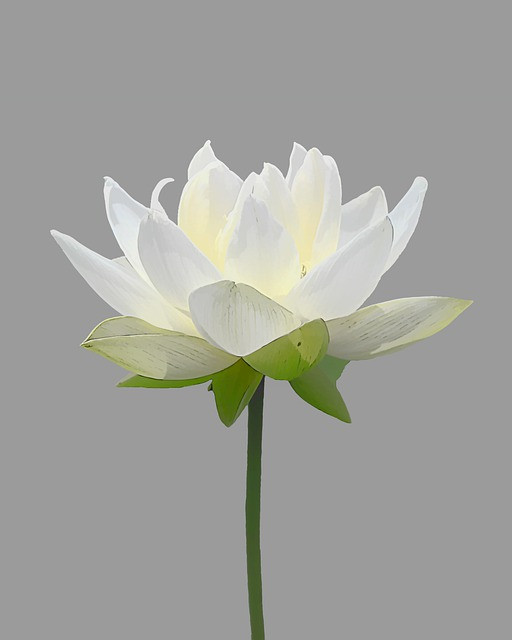
4 Benefits of Sitting in Lotus Pose
1. Hip Opening
Lotus pose is the ultimate seated hip opener. It increases blood circulation to the hips, pelvis, legs and feet.
Be sure to practice on both sides, first with one leg on top and then with the other. If you notice that one side of your body is significantly tighter than the other, practice twice as long on that side.
Eventually, you’ll balance out the two sides and find more equilibrium in both hips, knees, and feet.
Then, you will need to make sure you practice on both sides for the same length of time, to bring balance into your meditation, and also to bring balance into your daily life.
2. Deeply Stretch Ankles and Knees
The ankle and knee joints are crucial to our ability to stand and walk, run and dance. Lotus pose increases flexibility in all the important joints and ligaments of the legs.
It’s important to warm up beforehand and not hold the pose for too long—nor to sit through serious pain and discomfort.
3. Be More Calm, Aware and Focused
Sitting in lotus pose (or its variations) has a centering effect. The way the legs are bound together in the position helps ground and connect you to the earth.
Lift the heart and the crown of the head, connecting to the sky and universe above. Sitting in this way and practicing meditation connects us to the heart.
4. Awaken the Chakras
Sitting in lotus pose positively affects our subtle energy field. The seven main chakra points begin at the base of the spine and end just above the crown of the head.
Lotus pose redirects apana (the Sanskrit term for the downward-moving energy present in the body) through the lower body. It then moves back up the spine to activate the heart and upper chakra energy centers.

Quarter Lotus
Quarter lotus is more commonly known as sitting cross-legged or “crisscross applesauce” in elementary teacher speak. In this pose, the ankles are crossed and one foot is positioned in front of the other.
A meditation bolster or chair can help raise the hip and the pelvic bones forward so the lower back does not curve.
If needed, lean back against the wall or a sturdy piece of furniture. Put a soft pillow or two behind your lower back to make sure your spine is upright. If sitting cross-legged bothers your knees, stretch your legs out in front of you.
Half Lotus
Half lotus pose is identical to quarter lotus, except that one foot rests the opposite upper thigh. However, half lotus posture demands great hip flexibility to avoid strain.
Pro tip: Try practicing yoga hip-openers such as warrior I, squat and pigeon pose as warm-ups to prepare your body.
Full Lotus
The lotus position is a challenging position for most beginners. It’s where each foot is positioned on the opposite upper thigh. Needless to say, this poses requires significant hip and knee flexibility.
Avoid full lotus if you suffer from arthritis or any other issues in your feet, knees or hips.

More Seated Meditation Poses
Hero Pose
In hero pose (called “Seiza” in Japanese or, more generally, kneeling meditation), rest on the floor on bent knees. You sit on your feet with your shins flat on the floor and your ankles below your bottom.
Place a cushion between your bottom and heels for more support and less strain on your knees. If you feel any pain in this position, choose another meditation pose that allows you to be pain-free, relaxed and maybe even joyful.
Root your weight back and down through your sit bones to prevent putting excessive pressure on your knees.
Meditation helps to relax, so if this popular form of a yoga meditation pose does not feel good, do not push yourself into it. When you are working with this pose, you may also like to do a downward dog in between sessions, or a gentle yoga practice (such as yoga sun salutations) to warm up the legs and knees before sitting to meditate in hero pose.

Chair Meditation
Another fine choice for sitting meditation is to sit in a chair with your legs uncrossed, soles of the feet on the floor, and arms and hands resting in your lap. The points of contact with your feet on the floor can be a great focal point to meditate on, if you find your mind starting to wander. This will help to reset the brain mechanisms to find a steady and stress free meditation practice.
Sit close to the back of your chair for stability, yet try not to lean on the back of the chair unless you find it necessary.
Find the optimum posture on your seat. If you tend to slouch, put a rolled-up towel behind your lower back. Alternatively, put blankets or a cushion on the seat to raise your hips and pelvis forward.
Reclining Meditation Pose
Since the mind tends to be more alert and attentive when we’re seated in an upright position, sitting to meditate is ideal when possible.
However, you can meditate lying down, too. Just try not to fall asleep!
Savasana or corpse pose is traditionally practiced lying down on the back. Relax the muscles and center the mind for meditation practice.
Savasana is the same pose that is used after you practice yoga to help you integrate the yoga session that you just completed. Taking this essential time in stillness, with the body open and receptive, is an important time to let go of any remaining stress (or to clear the mind of any to-do-list that is still making itself known in your mind).
Although laying down may seem like the easiest yoga meditation position, it is still a challenge to focus on the breath and stay present with your notion of self-awareness.
After a good few minutes in this reclined position, gently lift yourself off the ground, return to a comfortable seated position and feel the well-being you have just cultivated in your yoga and meditation session.
Walking Yoga Meditation Posture
Walking is also a way to practice yoga and meditation.
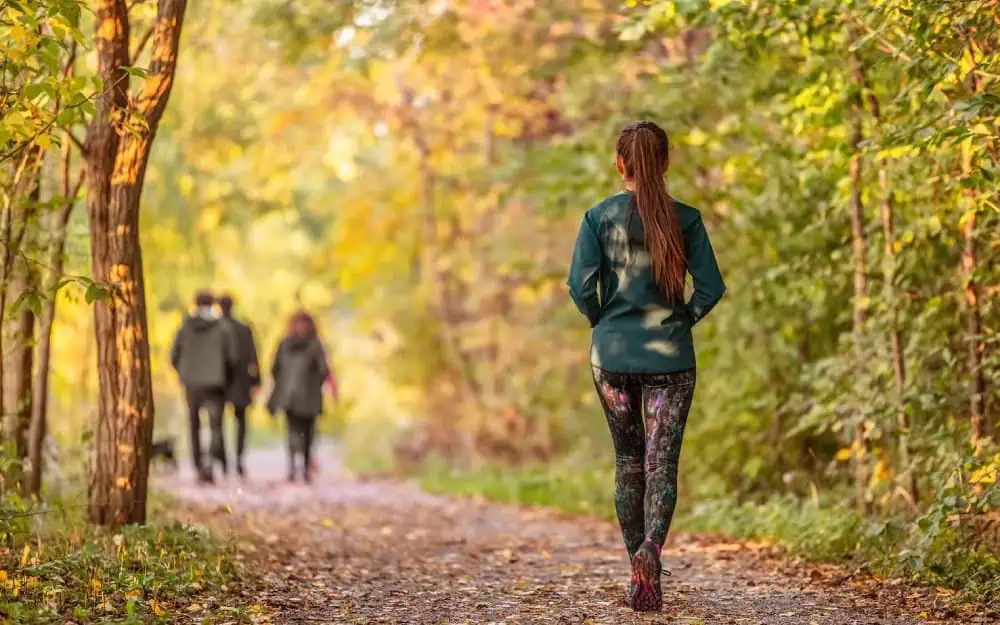
For a wonderful experience, you may like to walk out in nature, in a quiet area so that you can listen to your breath and focus on the sensations of well being in your body. This kind of yoga meditation helps to make you feel relaxed, while you receive the bonus of breathing in fresh air!
If a quiet place is not available to you, you may also try a walking meditation while commuting from home to work to set you up for a great day ahead. This may look like consciously taking each step, being mindful of what is around you, and keeping your head lifted to increase your self confidence.
In the end, yoga is about union. Union of the mind, body and breath. This union can be achieved in many ways, whether doing yoga asana, walking, sitting or simply breathing. So walking to work can be your own form of yoga and that means there is no more excuse to skip yoga again!
How can I keep track of my meditation practice?
If you are on a journey of growing your meditation practice, and you want to see the differences in your daily practice, it is a great idea to keep notes in a meditation or yoga journal.
This can be a simple notebook filled with insights, ideas and inspiration that come to you during your yoga or meditation session. It could also be filled with challenging moments, where you felt pain in the body after a particular yoga meditation pose, or what was happening in your mind during your yoga meditation session.
FAQs About Meditative Positions
Can you meditate lying down?
Yes, you can. There are specific meditation techniques, such as Yoga Nidra, that are traditionally done while lying down. What’s important is to find a comfortable position and focus on your breath (or an object, or thought) of meditation.
What are simple yoga poses for meditation?
Sukhasana (Easy Pose) – Sit cross-legged with a straight spine and focus on your breath.
Virasana (Hero Pose) – Sit on your heels with your knees together and your hands resting on your knees.
Padmasana (Lotus Pose) – Sit cross-legged with your feet on top of your thighs.
Balasana (Child’s Pose) – Kneel down and sit back on your heels, stretching your arms out in front of you.
Vrikshasana (Tree Pose) – Stand up straight and bring one foot up to rest on the opposite thigh.
What is the best meditation position?
There is no one “best” meditation position, as different positions may work better for different people depending on their body type, flexibility, and personal preferences.
What’s important is to find a position that is comfortable and allows you to maintain good posture.
Summary
There is no universal meditation posture that works for everybody. It takes some time and effort to find the ideal way to practice sitting meditation for your specific body type and lifestyle.
Remember that meditation involves more than the mind. The body should also feel pleasant and well-aligned.
Using an adequate posture is key to success. In the presence of pain and discomfort, it’s nearly impossible to stay focused on the present moment.
Even if your first meditation session is uncomfortable, don’t worry. Finding the right meditation position takes time and a dash of patience. Bit by bit, you’ll gain a deeper understanding of your personal uniqueness in body, mind and spirit!


